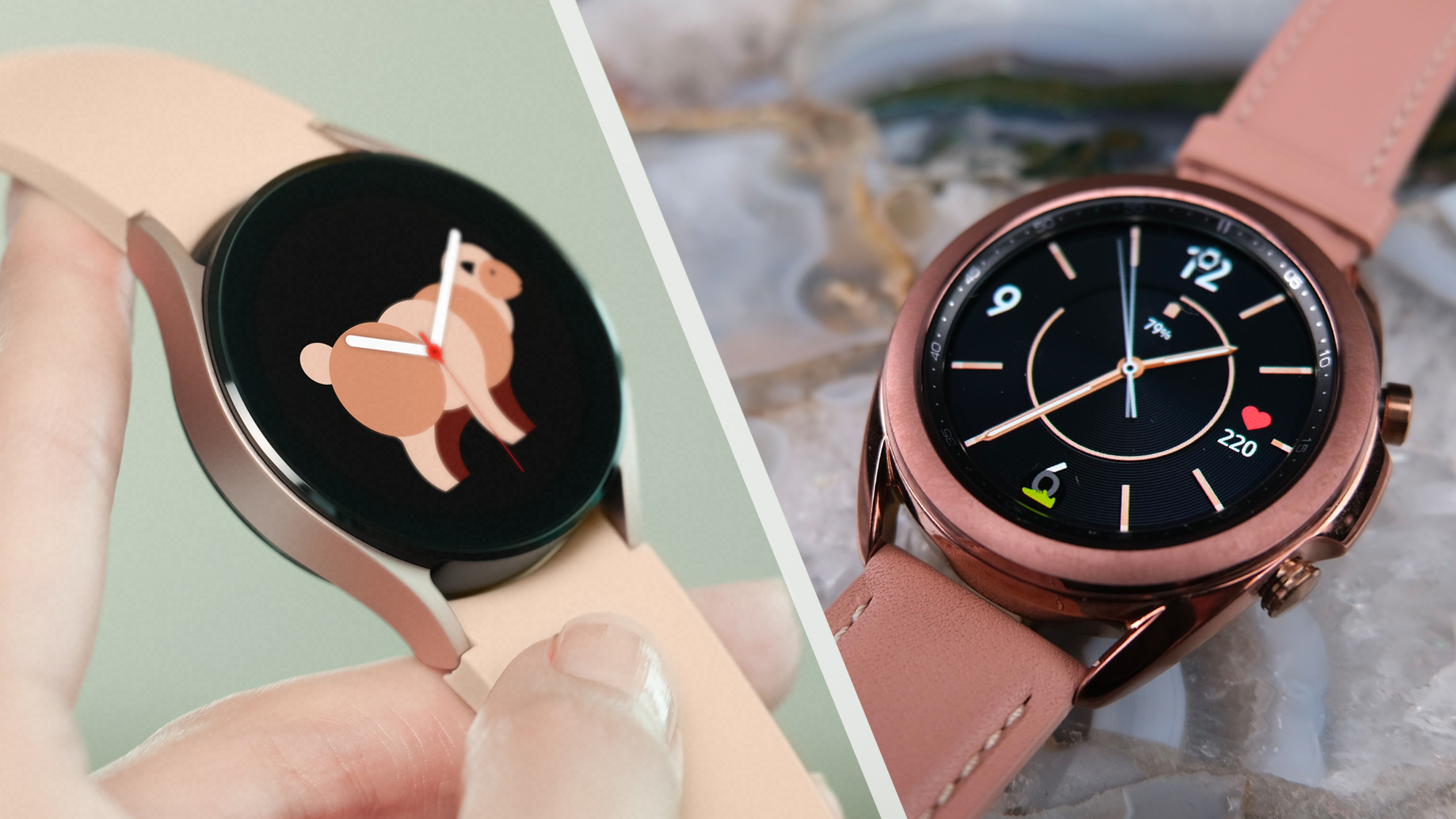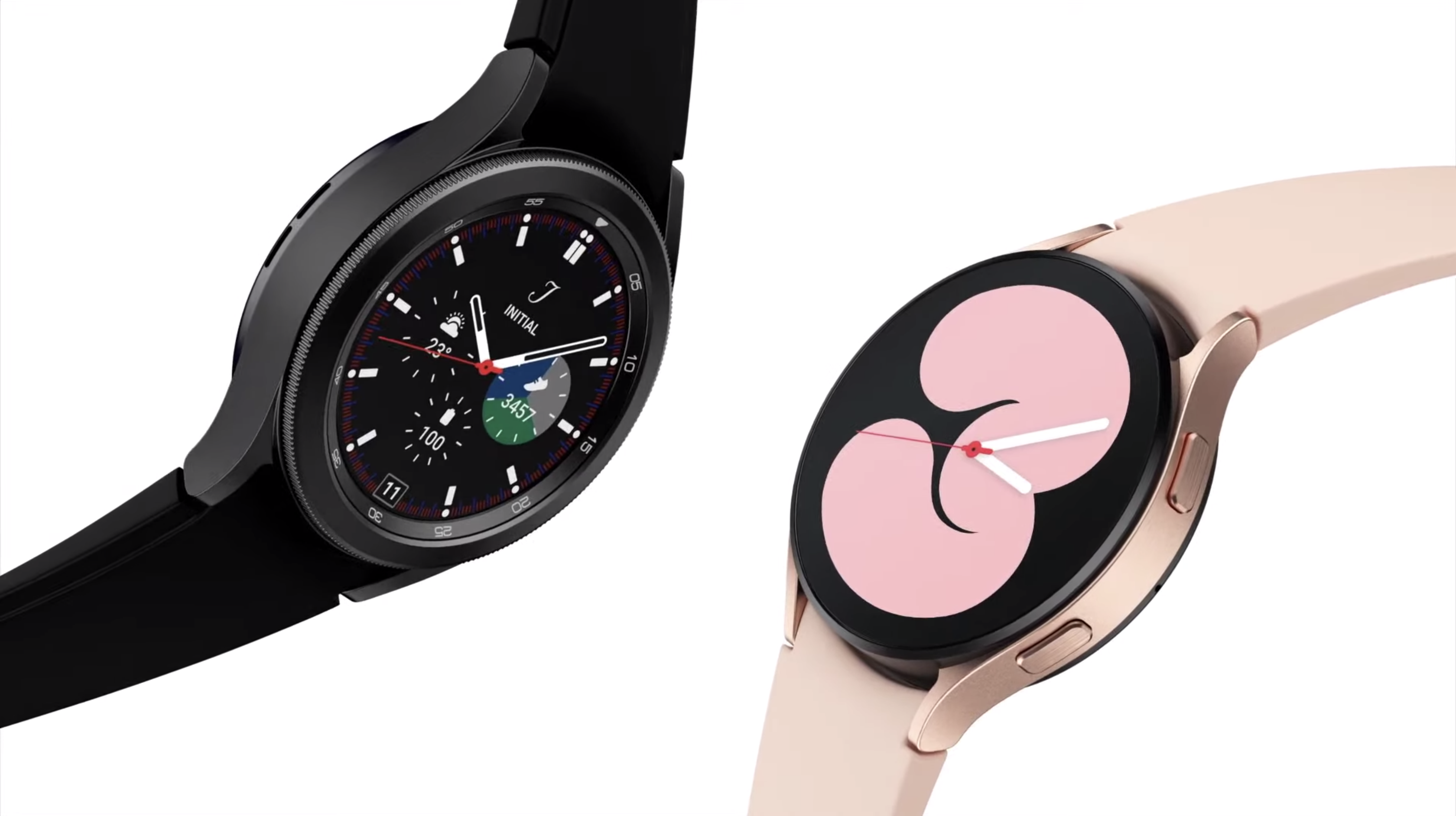Samsung Galaxy Watch 4 vs. Galaxy Watch 3: What's new?
How is the Samsung Galaxy Watch 4 different from the Galaxy Watch 3?

Have you heard about the Samsung Galaxy Watch 4? The next-generation smartwatch has finally arrived, offering several upgrades over the Samsung Galaxy Watch 3.
The differences between the Samsung Galaxy Watch 4 vs. Galaxy Watch 3 depend on which model of Samsung's newest smartwatch you're considering. The standard Galaxy Watch 4 looks more like Samsung Galaxy Watch Active 2, while the Galaxy Watch 4 Classic's design is a continuation of the leather straps and physical bezel we loved about last year's model.
- Smartwatch buying guide
- Samsung Galaxy Watch 4’s One UI looks awesome — but can it beat watchOS 8?
- Plus: Galaxy Watch 4 won't pair with iPhone — and its best features won't work with non-Samsung phones
There are plenty of differences on the inside, though. The Galaxy Watch 4 is powered by an all-new processor, and run's the new Wear OS in hand with Samsung's One UI Watch platform. Samsung introduced body composition analysis for the Galaxy Watch 4, too.
Here are the top things to know about the Samsung Galaxy Watch 4 vs. Galaxy Watch 3. And be sure to check out our guide on the Samsung Galaxy Watch 4 vs. Galaxy Watch 4 Classic for an in-depth analysis on the two new smartwatches.
Samsung Galaxy Watch 4 vs. Galaxy Watch 3: Price
The standard Galaxy Watch 4 starts at $249.99 for the 40mm Bluetooth model and $299.99 for the 40mm LTE model. The 44mm model costs $279.99 for Bluetooth and $329.99 for LTE.
The Galaxy Watch 4 Classic starts at $349.99 for the 42mm Bluetooth model and $399.99 for the 42mm LTE model. The 46mm version is priced at $379.99 for Bluetooth and $429.99 for LTE.
When it first launched, the starting Galaxy Watch 3 price of $399.99 will got you the 41mm model, while the 45mm model started at $429.99. It was $449.99 and $479.99 for LTE models, respectively. Now, though, the Galaxy Watch 3 can be bought for much less — We've seen retailers take over $100 off.
Get instant access to breaking news, the hottest reviews, great deals and helpful tips.

Samsung Galaxy Watch 4 vs. Galaxy Watch 3: Design
Both the Samsung Galaxy Watch 4 and Galaxy Watch 4 Classic have redesigned frames that create a gapless transition from the smartwatch chassis to the straps. The uniform crown buttons also sport an oblong shape, rather than one protruding round crown accompanied by a flat side button.
That's where the similarities end. The like the last Galaxy Watch Active, the Galaxy Watch 4 sits flush to your wrist and comes with silicone straps. For a more elevated aesthetic, the Galaxy Watch 4 Classic comes with genuine leather straps, a stainless steel case and, yes, the rotating bezel.
Overall, the Samsung Galaxy Watch 4 Classic and Galaxy Watch 3 share an elevated aesthetic. These smartwatches look more like traditional timepieces.
Samsung Galaxy Watch 4 vs. Galaxy Watch 3: Features
Let's go over what's new for the Galaxy Watch 4 series, compared to the Galaxy Watch 3. Most notably, the software found on the Galaxy Watch 3, Tizen, has been absorbed into a unified Google Wear OS (now called Wear OS 3.) The interface feels familiar, and Samsung's own programs like Samsung Pay and Samsung Health still take priority, but the smartwatch is loaded with Google’s programs now.
In addition to Wear OS, the Galaxy Watch 4 has Samsung's One UI Watch platform for better integration with the rest of Samsung device ecosystem. The settings from a Galaxy smartphone transfer to a Galaxy smartwatch, and vice versa, automatically. One UI Watch also leverages an expansive watch face library with bubbly numbers, animal animations and color-coordinated complications that might remind you of Android 12.

In terms of health and fitness features, the Samsung's new health sensor for the Galaxy Watch 4 combines heart rate monitoring (PPG), an electrocardiogram reader (ECG) and bioelectric impedance analysis (BIA). Similar to what you’ll find on the best smart scales, BIA sends a weak electric current through your body to analyze body fat percentage, body mass index (BMI), muscle mass, bone mass, body water percentage and more. You take a reading by holding your fingers against the crown buttons for about 15 seconds.
Samsung improved sleep tracking metrics for its latest smartwatches, too. Blood oxygen is measured once a minute overnight on the Galaxy Watch 4, compared to once every 30 minutes on the Galaxy Watch 3. More SpO2 readings could mean more insight on rest quality, especially for those with conditions like sleep apnea. When you sleep next to a compatible smartphone, the sounds of your snores get tracked, too.
Samsung Galaxy Watch 4 vs. Galaxy Watch 3: Battery life
There are subtle differences in the Samsung Galaxy Watch 4 vs. Galaxy Watch 3 battery life. Samsung said the Galaxy Watch 3 should last about two days on one charge, but we needed to charge our unit every day to keep up with how we used the watch. Activity tracking and enabling the always-on display were the biggest battery-drain culprits.
Samsung estimates the Galaxy Watch 4 battery life for 40 hours. We'd guess it's closer to a day, again. We're still testing the new smartwatch, though.
Samsung Galaxy Watch 4 vs. Galaxy Watch 3: Outlook
The Samsung Galaxy Watch 4 isn't an incremental upgrade over the Galaxy Watch 3. For a lower price, it's totally refreshed. The best part? It feels familiar, so there's not a huge learning curve or adjustment to the hardware or software.
We're not telling you to run out and exchange your Galaxy Watch 3 for a Galaxy Watch 4 — the previous-generation model is a great gadget, and will be supported with updates for at least three years. But if you're ready for a new experience, subtly sharper design and upgraded health features, the Galaxy Watch 4 is a well-rounded successor.

Kate Kozuch is the managing editor of social and video at Tom’s Guide. She writes about smartwatches, TVs, audio devices, and some cooking appliances, too. Kate appears on Fox News to talk tech trends and runs the Tom's Guide TikTok account, which you should be following if you don't already. When she’s not filming tech videos, you can find her taking up a new sport, mastering the NYT Crossword or channeling her inner celebrity chef.
